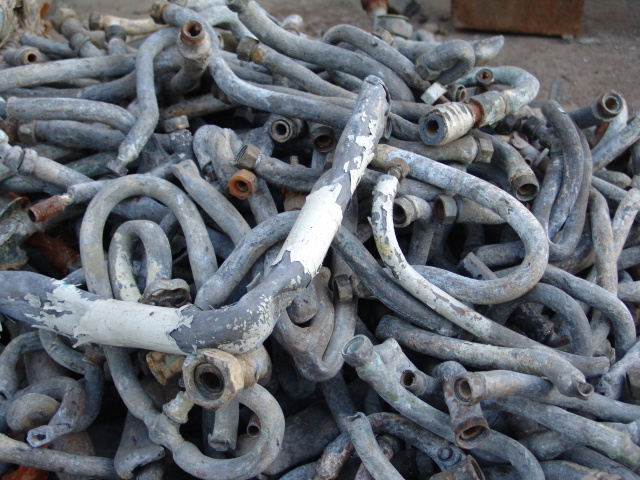
This year started out rough for residents and government officials in Flint, Mich. After much prodding, the state’s governor had declared a state of emergency Jan. 5 owing to high levels of lead in drinking water.
Up to 4 percent of Flint’s children have elevated levels of lead in their bloodstream, according to an article from last week. By Wednesday, activists had filed a lawsuit against several state and City of Flint officials alleging repeated violations of the Safe Drinking Water Act.
Of course, Flint’s water crisis didn’t happen over night. The trouble had been brewing since 2013, as economic depression spurred flight from the city and almost 42 percent of residents lived below the poverty line. In an effort to save money, city officials signed off on a plan to source water from the Flint River instead of buying it from Detroit, as had previously. Citizens complained. Officials denied and made excuses.
Perhaps on the only bright side, a conversation about a city’s obligations to its poorest communities has been opened, with at least one commentator evoking the term “environmental racism.” These conversations, however, are largely taking place elsewhere, as Oklahoma media have largely stuck to reporting wire-based copy about Flint’s disaster.
In Tulsa, however, News on 6 asked water treatment plant officials Tuesday how the city’s water fared under scrutiny. Meanwhile, the Tulsa World published a roundup that mentioned how the Oklahoma Democratic Party has attempted to link Grant County’s prevalence of lead poisoning in children to earthquakes.
Could it happen here?
In a way, lead in water has already been an issue in Oklahoma.
According to 2014 county-level data from the Centers for Disease Control and Prevention, Oklahoma’s Grant County exhibits a 14.8 percent rate of children testing positive for elevated levels of lead in their blood, making it among the top-10 counties in America in terms of childhood exposure to lead.
High-risk ZIP codes
Of Oklahoma’s 700-odd ZIP codes, the OCLPPP has identified 21 within Oklahoma, Tulsa, Muskogee, Jackson, Okmulgee, Ottawa, Kay, Garfield and Hughes counties that are considered high-risk target areas (HRTAs). These HRTAs feature 22 percent or more of housing built before 1950; a population of 5,000 people or higher; and 18 percent or more of children under the age of 6 years living below the poverty level.
HRTA ZIP codes include:
73106
73107
73108
73109
73111
73117
73119
73129
73521
73701
74104
74106
74110
74115
74127
74354
74401
74403
74447
74631
74848
Although elevated levels in 14.8 percent of children tested is by far the state’s highest rate, Grant County actually exhibits a relatively low number of confirmed lead-poisoning cases: four to be exact, which ties it with five other counties and is only one more than Cleveland County in 2014.
“I would consider [Grant County] an anomaly based on the really small sample sizes,” said Susan Quigley, administrative program director for the Oklahoma Childhood Lead Poisoning Prevention Program (OCLPPP). “Since not all doctors are screening for lead, it’s possible that the children who are screened are ones who are known to be at a higher risk.”
More tellingly, adjacent Kay County actually exhibits Oklahoma’s highest number of confirmed lead poisoning cases in children 6 and younger: 37 in 2014.
Fifty-plus years of zinc-smelter operations — from which Kay County crews used smelter materials as fill material for county roads and bridges — likely contribute to that county’s prevalence of elevated blood-lead levels. In fact, attorneys representing about 7,000 area residents filed a class-action lawsuit in 2008 alleging inadequate clean-up operations of the area.
Good news and bad news
The good news regarding lead levels in Oklahoma children is that the rate has been dropping overall, from 3.7 percent of all children statewide in 1997 to 0.5 percent in 2014. But the bad news is obvious: Any amount of lead in the bloodstream is unsafe. In June 2012, the CDC changed its threshold for measuring elevated blood-lead levels from 10 micrograms per deciliter down to five micrograms per deciliter.
“They’re not saying that five (percent) is safe,” said Quigley. “If you’re at five or above then there’s something different from you and, say, 98 percent of the rest of the children.”
Background on lead monitoring in children
OCLPPP provides screening and testing for lead exposure to eligible children 6 months to 6 years of age and follow-up testing for children with blood-lead levels that are five micrograms per deciliter or greater.
Oklahoma law established the OCLPPP and the Childhood Lead Poisoning Prevention Advisory Council in 1994. The law directed the State Board of Health to promulgate rules to screen children for lead toxicity, which the Legislature approved in 1995. The rules require that all children within the age range be assessed for blood-lead exposure using a questionnaire and blood samples. Rules also provide for follow up with children exhibiting elevated blood-lead levels. Laboratories report results of all relevant blood-lead tests performed to the OCLPPP.
The Centers for Disease Control and Prevention primarily funds the OCLPPP, but the Oklahoma State Department of Health matches $1 for every $2 of CDC funding. In fiscal year 2014, Oklahoma received $259,921 in direct funds for these efforts.





















